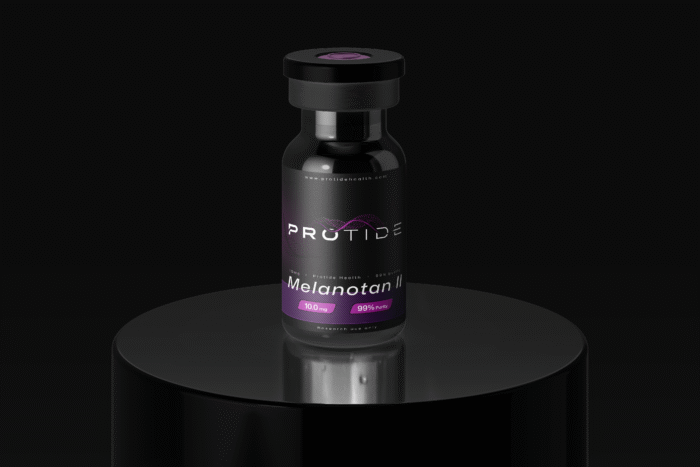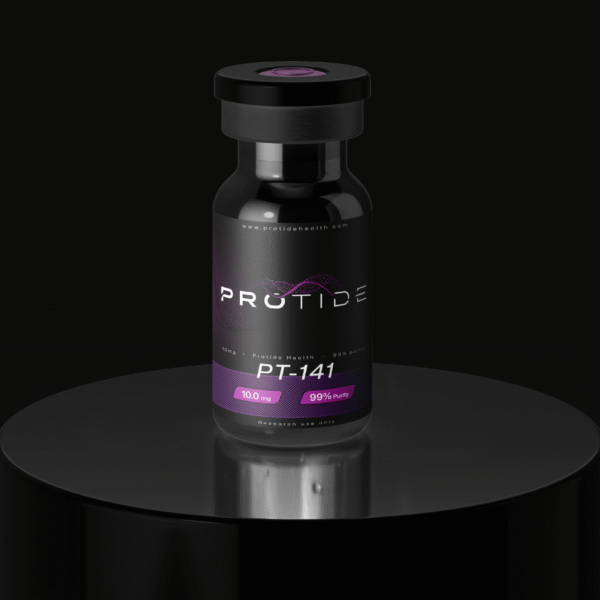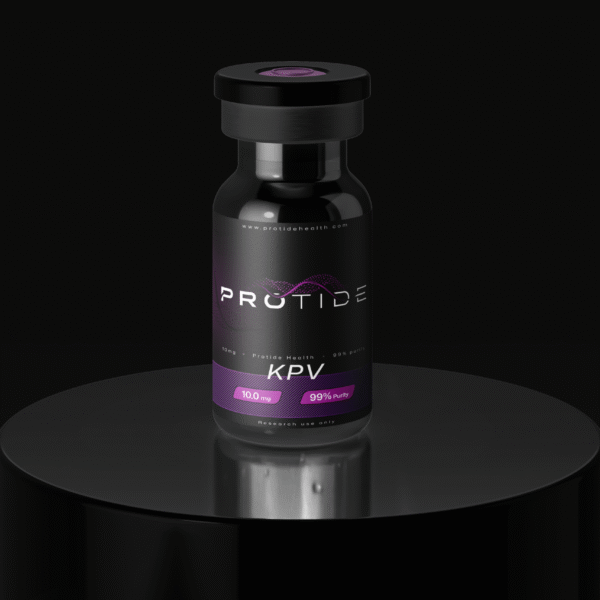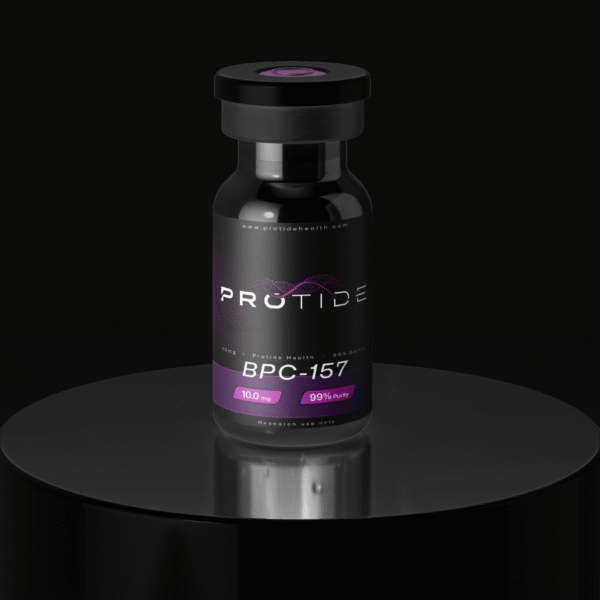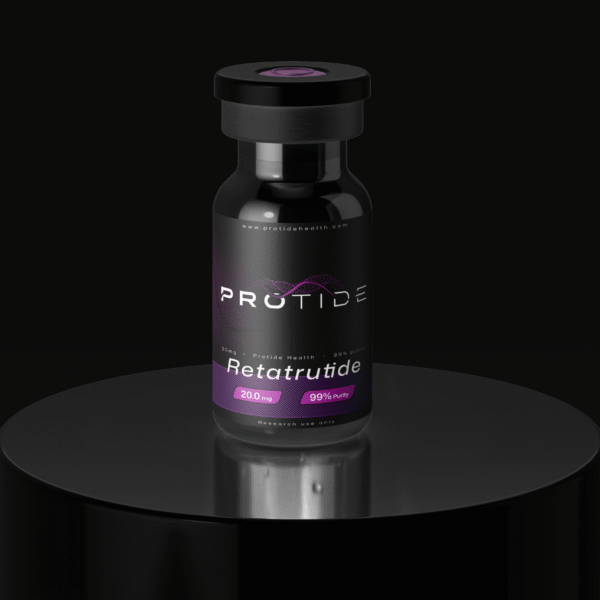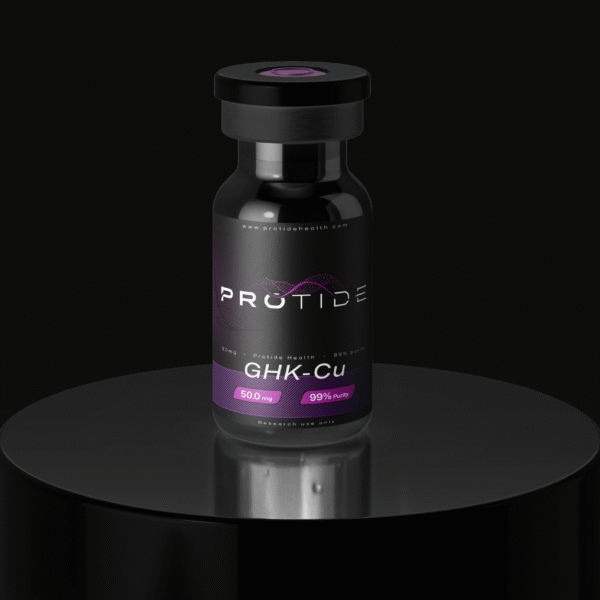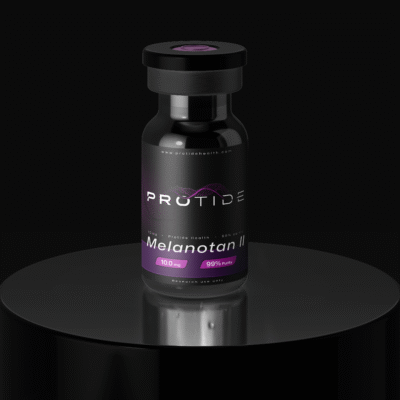Melanotan-2
$40.00
Free shipping on orders over $99!
- 99% Purity
- Third-Party Tested
- Secure Payments
- Free BAC Water
- Satisfaction Guaranteed
Melanotan 2: In-Depth Insights
Introduction
Melanotan II (MT-II) is a synthetic cyclic heptapeptide analog of α-melanocyte-stimulating hormone (α-MSH). Originally developed as a more stable and potent alternative to endogenous α-MSH, Melanotan II acts as a nonselective agonist at several melanocortin receptor subtypes (MC1R, MC3R, MC4R, and MC5R). These receptors are implicated in a broad range of physiological processes including pigmentation, appetite control, sexual function, energy homeostasis, and inflammatory signaling. The research surrounding Melanotan continues to evolve, shedding light on its potential applications.
Due to its chemical stability, receptor potency, and ability to cross the blood–brain barrier, Melanotan II has been employed in numerous preclinical and early translational studies to explore the melanocortin system. It remains strictly a research-use-only peptide, with no approval for therapeutic application in humans or animals. As the interest in Melanotan grows, research efforts aim to better understand its mechanisms and implications.
Molecular Structure and Stability
- Sequence: Ac-Nle-Asp-His-D-Phe-Arg-Trp-Lys-NH₂.
- Design: The cyclic conformation enhances resistance to enzymatic degradation compared to linear α-MSH analogs, significantly prolonging half-life.
- Receptor Affinity: Binds with high potency to MC1R and MC4R, moderate affinity at MC3R and MC5R, and minimal MC2R activity (avoiding adrenal stimulation).
- Pharmacokinetics: Demonstrates measurable activity in both peripheral and central tissues, including skin melanocytes and hypothalamic circuits, offering versatile research utility.
Mechanisms of Action (Backed by Peer-Reviewed Evidence)
1. Pigmentation and Photoprotection
- MC1R Activation: Melanotan II stimulates melanocytes to increase eumelanin production, resulting in darker pigmentation.
- Preclinical Findings: Animal models show enhanced tanning and resistance to UV-induced DNA damage following MT-II exposure, linked to increased melanin density.
- Research Significance: Serves as a model for investigating skin photoprotection, DNA repair mechanisms, and pigmentation disorders.
2. Appetite and Energy Homeostasis
- MC3R and MC4R Pathways: In rodent studies, MT-II administration decreases food intake and body weight, attributed to hypothalamic melanocortin signaling.
- Neuroendocrine Circuitry: MC4R activation suppresses orexigenic neuropeptide Y (NPY) pathways while enhancing anorexigenic signals, creating a potent appetite-suppressive effect.
- Implication: Offers a robust model for studying obesity, feeding behavior, and metabolic regulation.
3. Sexual Function and Neuroendocrine Modulation
- MC4R Activation in CNS: Early studies in animals demonstrated spontaneous erectile responses and increased sexual activity following MT-II administration.
- Clinical Data: A small human trial reported that subcutaneous MT-II induced erectile responses and heightened sexual desire in male participants, supporting its use as a model compound for studying neuroendocrine sexual function.
- Significance: Provides insights into the role of melanocortin pathways in reproductive physiology and sexual behavior research.
4. Anti-Inflammatory and Immunomodulatory Pathways
- Melanocortin Receptor–Mediated Cytoprotection: MT-II suppresses pro-inflammatory cytokines (e.g., TNF-α, IL-1β, IL-6) and promotes anti-inflammatory IL-10 in cell and animal models.
- Mechanistic Basis: These effects are thought to involve NF-κB inhibition and activation of melanocortin receptors on immune cells.
- Applications: Provides a framework for studying inflammatory disorders, autoimmune mechanisms, and systemic cytokine regulation.
5. Behavioral and CNS Effects
- Mood and Stress: Preclinical work indicates that MT-II influences central melanocortin pathways related to mood and stress adaptation.
- Neuroprotection: Melanocortin agonism has been linked with reduced ischemic damage and neuroprotection in rodent brain injury models.
- Research Potential: Expands its utility into neuroscience for studying the intersection of stress, mood, and neuroendocrine resilience.
Research Applications
- Pigmentation Studies: Mechanisms of melanogenesis and UV protection.
- Obesity and Metabolic Research: Appetite suppression, energy expenditure, and weight regulation.
- Sexual Function Models: MC4R-driven arousal pathways and reproductive endocrinology.
- Inflammation and Immunology: Cytokine modulation and systemic immune regulation.
- Neuroscience: Stress, mood, and neuroprotective signaling pathways.
Citations
- Hadley ME, et al. Discovery and characterization of melanocortin peptides and analogs. Ann N Y Acad Sci. 1999. PubMed
- Thody AJ, et al. Melanocortin peptides and the regulation of skin pigmentation. Pigment Cell Res. 1991. PubMed
- Wessells H, et al. Effect of an α-MSH analog on penile erection and sexual desire in men. J Urol. 2000. PubMed
- Fan W, et al. Role of melanocortinergic neurons in feeding and sexual behaviors. Nature. 1997. PubMed
- Hruby VJ, et al. Design of cyclic melanotropin analogs with increased potency and selectivity. Peptides. 1995. PubMed
- Mountjoy KG. Melanocortin receptors: physiology and pharmacology. Pharmacol Rev. 2010. PMC
- Getting SJ. Melanocortin peptides and their receptors: new targets for anti-inflammatory therapy. Trends Pharmacol Sci. 2002. PubMed
Conclusion
Melanotan II is a potent, stable analog of α-MSH with broad agonist activity across melanocortin receptor subtypes. Research has demonstrated its roles in pigmentation, appetite suppression, sexual function, inflammation modulation, and neuroendocrine pathways. Its ability to engage both peripheral and central melanocortin receptors makes it a versatile and valuable research tool for exploring melanocortin biology and systemic physiology.
Disclaimer
This product is provided for laboratory research purposes only. It is not intended for human or veterinary use. All information presented is based on preclinical and early clinical research findings and is supplied solely for educational and research reference.
Refer friends. Earn together
Invite your friends and earn a discount on your next purchase. Your friend also earns a discount! Get started now, by sharing your referral link with your friends.
Refer friends. Earn together
Invite your friends and earn a discount on your next purchase. Your friend also earns a discount! Get started now, by sharing your referral link with your friends.

